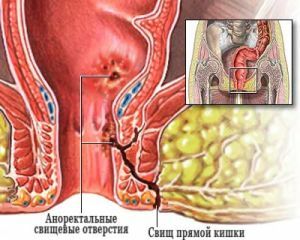 Hemorrhoidal buds appear as a result of a violation of the elasticity of the walls of the veins, are manifested by their inflammation or the formation of blood clots causing a violation of venous circulation in the pelvic region.
Hemorrhoidal buds appear as a result of a violation of the elasticity of the walls of the veins, are manifested by their inflammation or the formation of blood clots causing a violation of venous circulation in the pelvic region.
Thrombosis can affect both internal and blood vessels located in the anus.
In any form of hemorrhoids, a consultation with a proctologist is necessary to select a treatment regimen.
External and internal hemorrhoidal cones require individual solution of problems with the help of medications or surgical intervention.
Methods for treating hemorrhoids have been developed for greater patient comfort, they are easily tolerated by patients even if medication fails to produce the desired result.
Contents of
- The third stage is difficult and very painful
- The provoking factors
- The correct diagnosis is an important stage
- Therapy methods
- Probability of complications
- Postoperative period
- Recommendations during the rehabilitation period
- Why is urgent medical treatment necessary?
The third stage is difficult and very painful.
If hemorrhoids pass to the third degree, then during the defecation with muscle tension, the venous nodes come out from the anus outward.
In the case of a prolapse of the nodes, directing them independently is not possible, the patient experiences constant itching and pain. When combing the area of the anus, appear scratches and cracks.
In addition to unpleasant sensations, hemorrhoids of stage 3 are often accompanied by bleeding, and blood can be released not only during or after a trip to the bathroom.

Photo and symptoms of hemorrhoids 1, 2, 3 and 4 degrees
Provoking factors
Hemorrhoids of the third degree do not choose a "victim" by gender. The development of the disease can provoke different causes:
- stress;
- smoking;
- alcoholism;
- subcooling;
- unbalanced power;
- coarse food;
- delivery;
- sedentary lifestyle.
Establishing the right diagnosis is an important stage of the
The development of the disease is carried out in several stages, each treatment scheme requires a special approach.
Before choosing a method of treatment, the patient undergoes a complete visual, instrumental and clinical examination.
Hemorrhoids of the third degree are characterized by large nodes involuntarily "dropping out".
As a result, the patient experiences discomfort, itching, pain, burning sensation in the anus.
To determine the type of disease proctologists use complex diagnostics: 
- rectal anoscopy with photographing of hemorrhoidal nodes;
- laboratory and clinical studies of feces for the presence of bloody inclusions, a general blood test.
Most clinics dealing with proctology issues prefer hemorrhoidectomy techniques using modern instrumentation. Unique technologies allow not only to carry out the operation in a short time, but also to reduce blood loss and reduce the recovery period.
Methods of therapy
Treatment of hemorrhoids of the 3rd stage can be performed surgically or in a minimally invasive way:
- Bandaging of internal nodes using the Subbotin method .Under the influence of anesthesia, the pelvic muscles relax, the sphincter spontaneously stretches, opens free access to the operating field. The knot is grasped by a clamp, its incision is made at the level of the intestinal mucosa. After this, a dense bandage of the "leg" of the node is carried out. The method is based on the natural death of the node cells and its independent rejection.
- The hemorrhoidectomy is performed by surgical excision of the nodes under spinal anesthesia. The method is applied on the open and closed surface of the operating field. The surgeon exercises control over the action with the help of a rectal mirror. The nodes to be removed are removed by clamps to the outside, the blood vessels are pierced, followed by excision of the affected tissues. More often the wound field is left open for self-healing, since after suturing the wound patients experience pain. To protect the wound in the rectum, a tampon impregnated with antiseptic agents is injected.
- Latex ringing is a universal method and can be used to treat any degree of hemorrhoids. The method is based on fixing the ring in the area of the "leg" of the node, overlapping the venous blood flow. The consequence of the procedure is the "withering away" of the hemorrhoid cone and its subsequent rejection.
- Desaturization is similar to the previous method, but the artery that feeds the node is cut off. The advantage of the method is the accelerated rate of recovery.

Surgical method for removal of hemorrhoid cones is recommended for diseases of the 3rd and 4th degree. The essence of the method consists in the complete removal of the nodes by excision. The duration of the procedure depends on the number and size of cones.
Treatment of cracks in hemorrhoids of the third degree. Surgical treatment of cracks around the anus is performed after anesthesia of the field.
The proctologist stretches and fixes the sphincter to prevent it from contracting. Ensuring maximum rest allows the cracks to "dry up" and close.
Among the large number of methods for treating the problems of anus, the most popular is dezarterification.

Modern methods are characterized by safety, high recovery rates, shortened rehabilitation times.
The disadvantage of the method is a relatively high cost.
Probability of complications
After surgery, complications may occur, since even low-traumatizing methods are not guaranteed against the reaction of the body. According to proctologists, any surgical intervention can be complicated by bleeding.
The minimization of risks is carried out by the quality of the patient's preparation for the operation, which includes a comprehensive examination of the patient with the determination of coagulation time.
The choice of treatment technique or type of surgery is determined by the results of laboratory tests.
In the operating method, it is also possible to infect the working field, which is manifested in inflammation and suppuration of the wound with a rise in temperature in the patient. If the reaction of the organism is manifested more than 1,5-2 days, then a repeated consultation of the surgeon is necessary.
Postoperative period
If during the period of postoperative recovery the patient has pain, then it is stopped by analgesics.
Postoperative period in men differs from that in women. In men, there is often a delay in the process of urination,  disorder of the function of the prostate. Elimination of the problem is carried out by the method of insertion into the urethra of the catheter.
disorder of the function of the prostate. Elimination of the problem is carried out by the method of insertion into the urethra of the catheter.
In parallel, a swab with adrenaline is injected into the rectum to reduce lumen in the injured blood vessels.
If the patient is bleeding, intravenous or intramuscular blood-injecting injections are prescribed.
Recommendations in the rehabilitation period
During the rehabilitation period after the operation of hemorrhoids of the third degree, a special diet is recommended to the patient with mandatory inclusion of low-fat sour-milk products, red beets, oatmeal, prunes, vegetable oil in the diet.
At the first recovery stage, it is recommended to take laxatives, which prevent constipation.
Defecation should be performed without strain once a day.
Why is urgent medical treatment needed?
 Hemorrhoids is a problem that needs to be addressed from the moment of manifestation.
Hemorrhoids is a problem that needs to be addressed from the moment of manifestation.
If the patient agrees to endure the inconvenience, unpleasant sensations and pains due to false shame, the disease can acquire such forms, for the treatment of which it will take a lot of time, patience and financial resources.
The most dangerous complications of untreated hemorrhoids of the 3rd degree are infringement of the nodular cone knee or vein thrombosis.
In addition to severe pain, hemorrhoidal nodes cause discomfort, forcing specialists to use surgical intervention.
Continuous hemorrhages, appearing during and after defecation, are no less dangerous. If the paraproctitis development process can not be stopped at the initial stage, the disease takes a chronic course and requires urgent surgical intervention.
